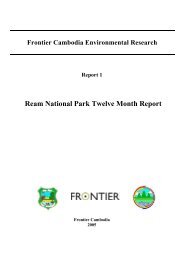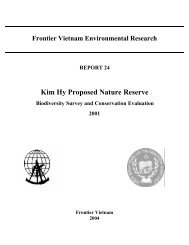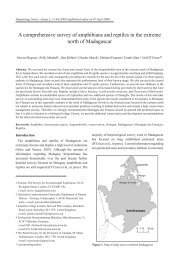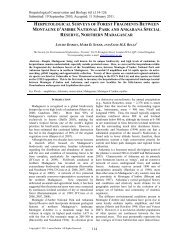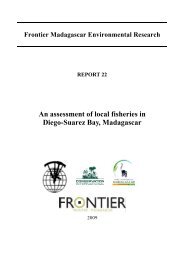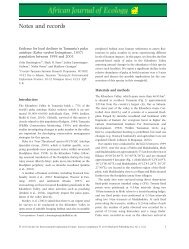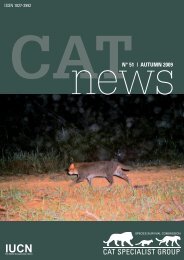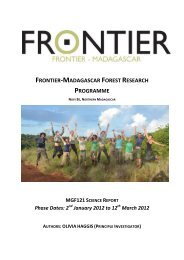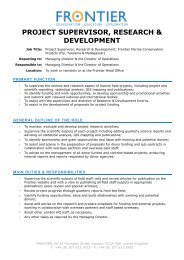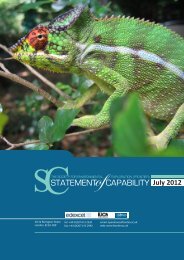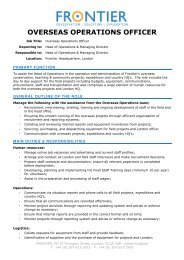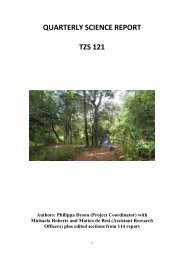Biophysical Survey of Mafia Island Marine Reserves
Biophysical Survey of Mafia Island Marine Reserves
Biophysical Survey of Mafia Island Marine Reserves
You also want an ePaper? Increase the reach of your titles
YUMPU automatically turns print PDFs into web optimized ePapers that Google loves.
area, the most extensive continuous reef site identified at NIMR. The north-west tip <strong>of</strong><br />
the reef consists <strong>of</strong> extensive Thalassodendron cilatum seagrass beds but changes into a<br />
s<strong>of</strong>t coral dominated reef approximately 300m along the reef edge to the east. The rocky<br />
reef section extends down to a depth <strong>of</strong> 10m. Sand substrates are found at the bottom <strong>of</strong><br />
the reef edge, which then very gradually slopes downwards reaching a maximum depth <strong>of</strong><br />
about 20m. The site is frequently subject to strong currents and high turbidity. In places,<br />
the shallow crest and reef flat areas support branching Acropora communities, however,<br />
at other locations, such as site 3, the shallow areas are dominated by macroalgae and<br />
seagrass.<br />
This section <strong>of</strong> reef is formed <strong>of</strong> coral rock overlaid by loose sand and rubble<br />
substrates. It supports a diverse and extensive s<strong>of</strong>t coral community (27.78% +/- SE<br />
4.67), as well as sponge (7.33% +/-SE 1.04) and scleractinian coral species (7.17% +/-<br />
SE 2.22) (Figure 6). The scleractinian coral consists primarily <strong>of</strong> massive growth forms<br />
(6.17% +/- SE 2.30) with low levels <strong>of</strong> encrusting and branching forms (Figure 7).<br />
Average percent cover (+/- SE)<br />
35<br />
30<br />
25<br />
20<br />
15<br />
10<br />
5<br />
0<br />
All hard coral<br />
Dead Coral<br />
Bleached Coral<br />
S<strong>of</strong>t Coral<br />
Sponge<br />
Other Benthic Organisms<br />
Seagrass<br />
Macroalgae<br />
Turf algae on rubble<br />
Turf algae on coral rock<br />
Crustose Coralline Algae<br />
Nutrient Indicator Algae<br />
Rock<br />
Figure 6. Average percent cover (+/- SE) by benthic type across all transects completed at site 3, NIMR.<br />
Rubble<br />
Sand<br />
Silt<br />
Other



